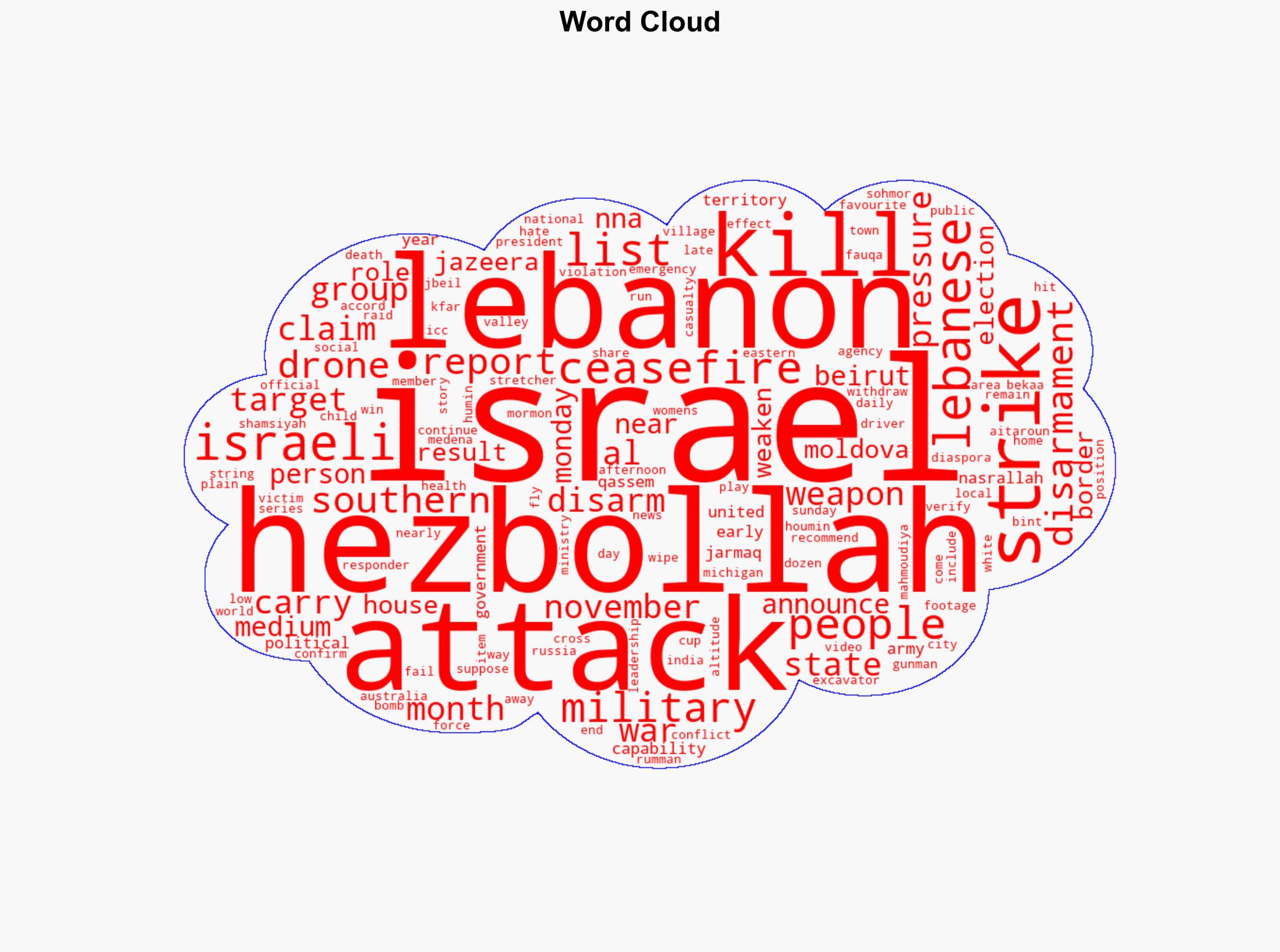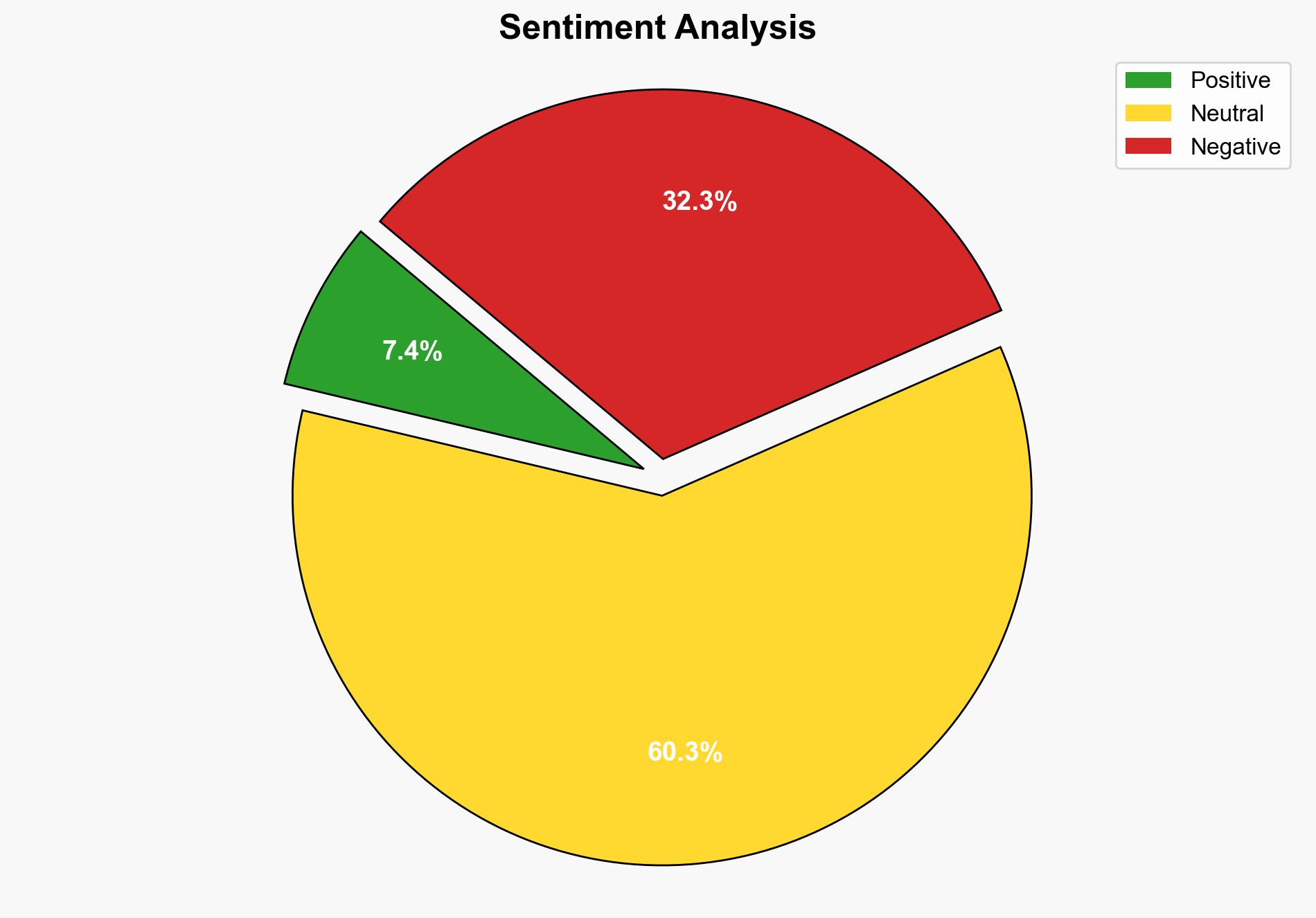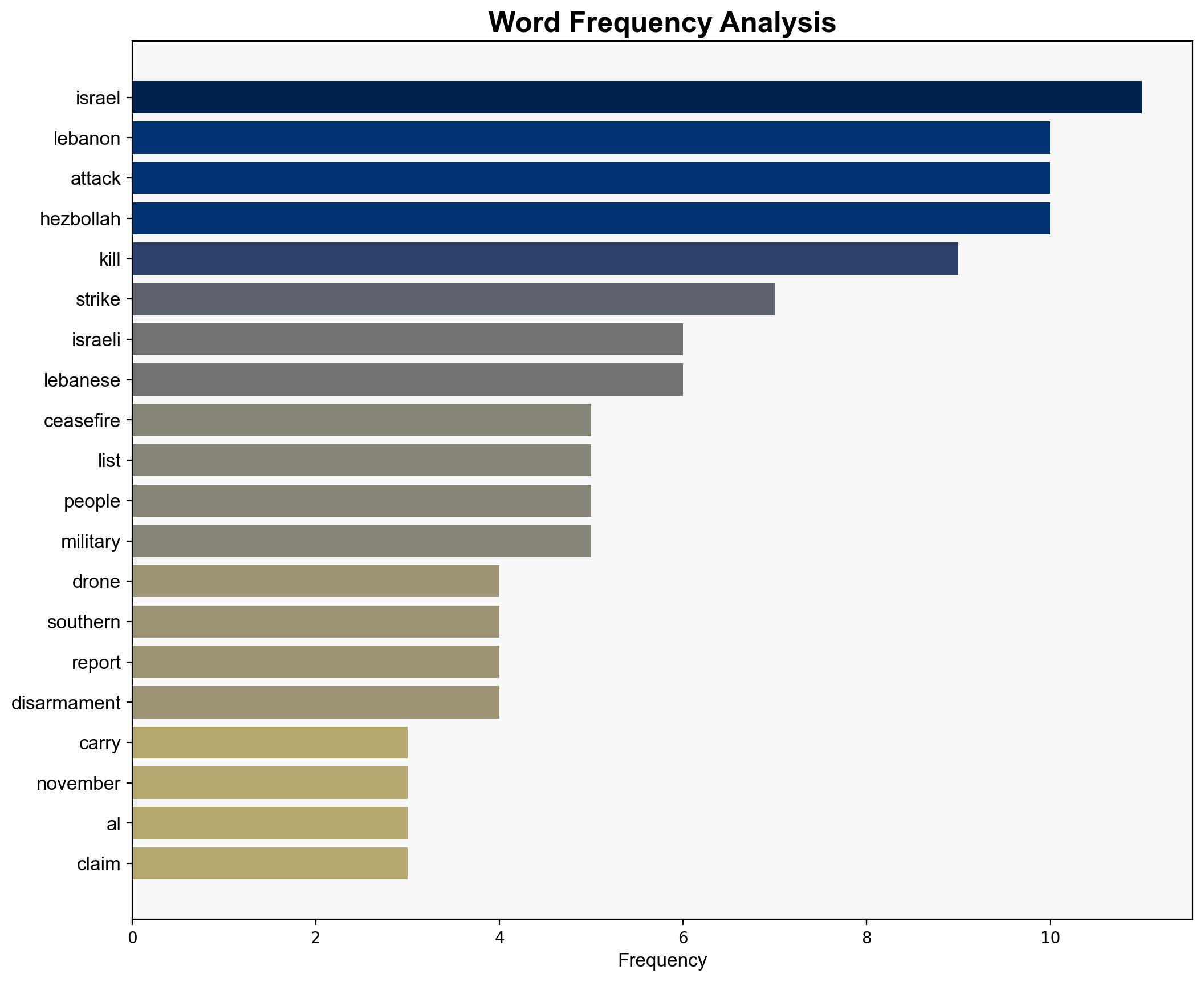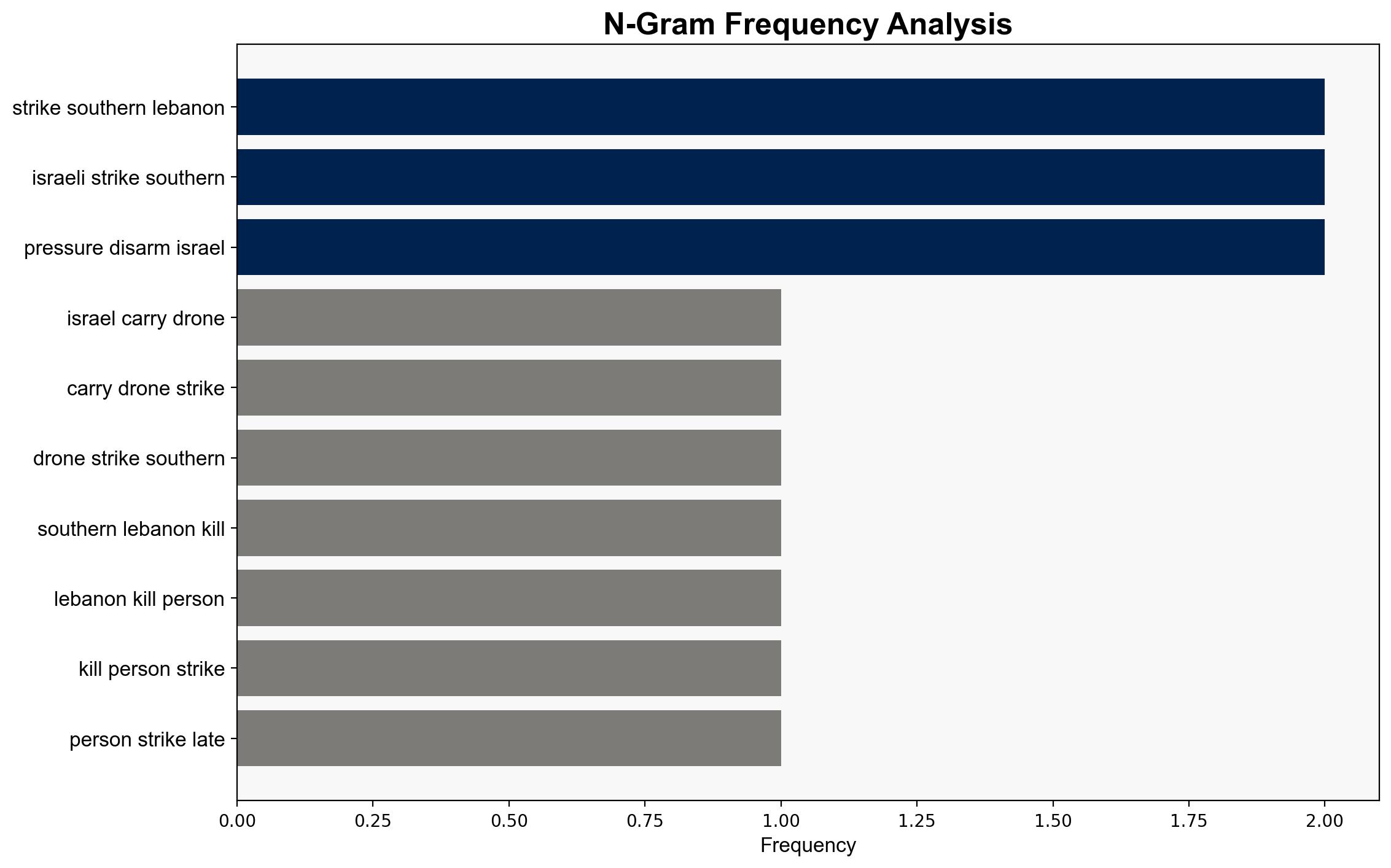Israel carries out drone strike in southern Lebanon killing one person – Al Jazeera English
Published on: 2025-09-29
Intelligence Report: Israel carries out drone strike in southern Lebanon killing one person – Al Jazeera English
1. BLUF (Bottom Line Up Front)
The most supported hypothesis is that Israel conducted the drone strike in southern Lebanon to prevent Hezbollah from rebuilding its military capabilities. This aligns with Israel’s ongoing strategic objective to weaken Hezbollah and prevent future threats. Confidence in this hypothesis is moderate due to the complexity of regional dynamics and potential undisclosed motivations. Recommended action includes monitoring regional military activities and diplomatic communications to anticipate further escalations.
2. Competing Hypotheses
1. **Hypothesis A**: Israel’s drone strike was a targeted effort to disrupt Hezbollah’s military rebuilding efforts, consistent with its long-term strategy to weaken Hezbollah’s operational capabilities.
2. **Hypothesis B**: The strike was a retaliatory measure in response to recent provocations or intelligence indicating an imminent threat from Hezbollah, rather than a preemptive strategic action.
Using the Analysis of Competing Hypotheses (ACH) 2.0, Hypothesis A is better supported by the pattern of Israeli military actions and statements regarding Hezbollah’s disarmament. Hypothesis B lacks specific evidence of recent provocations or threats.
3. Key Assumptions and Red Flags
– **Assumptions**: It is assumed that Israel’s primary motivation is to prevent Hezbollah’s military strengthening. Another assumption is that the strike was based on credible intelligence.
– **Red Flags**: Lack of detailed information on the specific target and its significance raises questions about the strike’s immediate necessity. Potential bias in reporting from state-run and regional media sources could obscure motivations.
4. Implications and Strategic Risks
The continuation of Israeli strikes in Lebanon risks escalating into broader conflict, potentially drawing in regional actors. This could destabilize the already fragile political situation in Lebanon and impact international diplomatic efforts. Economic repercussions may arise from increased military activity affecting local and regional markets. The psychological impact on civilian populations could fuel further unrest and anti-Israel sentiment.
5. Recommendations and Outlook
- Enhance intelligence-sharing with regional allies to better understand Hezbollah’s capabilities and intentions.
- Encourage diplomatic engagement to de-escalate tensions and promote dialogue between Israel and Lebanon.
- Scenario Projections:
- **Best Case**: Diplomatic efforts succeed in reducing tensions, leading to a temporary cessation of hostilities.
- **Worst Case**: Escalation into a broader conflict involving multiple regional actors, destabilizing the region further.
- **Most Likely**: Continued low-intensity conflict with periodic strikes and retaliations, maintaining regional instability.
6. Key Individuals and Entities
– Hassan Nasrallah
– Naim Qassem
7. Thematic Tags
national security threats, counter-terrorism, regional focus, military strategy




